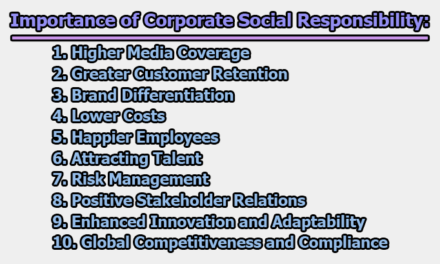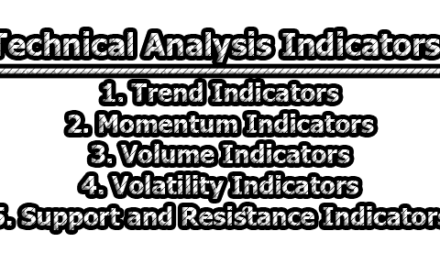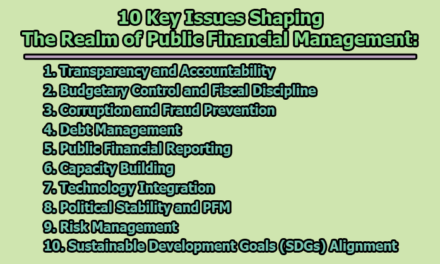Basic Understanding of Key Performance Indicators (KPIs):
Key Performance Indicators (KPIs) are simple but powerful tools that help organizations understand how well they are doing. They turn goals into measurable results, making it easier to see whether the company is on the right track. KPIs give teams clear direction, show what needs attention, and support better decision-making. With the right KPIs, businesses can track progress, improve performance, and stay focused on what truly matters. In the rest of this article, we will explore the basic understanding of key performance indicators (KPIs).
What are the Key Performance Indicators (KPIs)?
Key Performance Indicators (KPIs) are clear, measurable signs that help you understand whether a project, team, or organization is reaching its goals. They show how well things are working and where improvement is needed. KPIs focus on the most important areas—like performance, quality, efficiency, or user satisfaction—so you can track progress and make better decisions.
Importance of KPIs:
Key Performance Indicators (KPIs) play a vital role in helping businesses understand how well they are doing and where they need to improve. They act like measurable checkpoints that show whether the company is moving in the right direction. When organizations set clear KPIs and monitor them regularly, they can align their teams with larger goals, increase employee motivation, and support steady, long-term growth.
KPIs also give businesses reliable data they can use to make smart decisions. Instead of guessing, leaders can look at real numbers to understand what’s working and what isn’t. This helps them use their time, money, and resources more efficiently. KPIs encourage a culture where improvement is continuous, not occasional.
By using KPIs effectively, companies gain a deeper picture of how their operations and strategies are performing. This insight helps them direct their efforts toward the areas that make the biggest difference. KPIs also reveal important trends and patterns—both positive and negative. With this information, businesses can adjust their plans early, improve weak areas, and take advantage of new opportunities as they appear. Ultimately, KPIs help organizations stay focused, agile, and prepared for future challenges.
The Benefits of Using KPIs:
Businesses track Key Performance Indicators (KPIs) for many important reasons. Whether a company wants to shift its focus, improve efficiency, manage performance better, or even change its direction entirely, KPIs provide the foundation for making smart, informed decisions. They help leaders move from assumptions to clear, measurable information. Below are the main benefits of tracking KPIs:
- Clarity and Focus: KPIs help define what truly matters. By clearly expressing an organization’s vision, mission, and objectives, KPIs make it easier for everyone—from managers to team members—to understand what they are working toward. They align different departments and individuals so that everyone’s effort supports the overall strategy. This shared focus reduces confusion and helps teams stay on track.
- Easy Tracking of Performance: KPIs simplify the process of checking how well a company or department is performing. They highlight strengths that deserve recognition, weaknesses that need attention, and opportunities or threats that may affect growth. With KPIs, leaders can pinpoint problems early and take action before they grow bigger.
- Better Decision-Making: Strong decisions require solid evidence, and KPIs provide exactly that. Because KPIs are based on real data, they give leaders the confidence to choose the best path forward. Instead of relying on guesses or opinions, companies can rely on facts that show what is effective and what needs to change.
- Accountability and Productivity: Tracking KPIs encourages a culture of responsibility. When employees understand what they are measured on, they naturally become more focused and motivated. This sense of ownership helps teams work smarter, encourages innovation, and builds a workplace where feedback is valued and acted upon.
- Improved Communication: KPIs create a common language within the organization. They make discussions more productive because everyone is referring to the same data. This reduces misunderstandings and helps teams collaborate more effectively.
- Goal Setting and Progress Monitoring: KPIs break large goals into smaller, manageable targets. This makes it easier to see whether the company is progressing, falling behind, or outperforming expectations. It also helps employees understand how their daily tasks contribute to larger goals.
- Motivation and Engagement: When employees can see measurable progress, they feel more engaged. KPIs give clear indicators of success, boosting morale and motivating teams to reach the next milestone.
- Early Detection of Problems: KPIs act like warning signs. If something starts going wrong—such as declining sales, customer complaints, or slowing productivity—KPIs highlight it quickly. This early alert allows the company to fix issues before they become serious.
- Better Resource Management: Because KPIs reveal what’s working and what isn’t, companies can invest their time, money, and energy more wisely. Instead of spreading themselves too thin, organizations can focus on the areas that will deliver the biggest impact.
- Long-Term Growth and Sustainability: Consistently tracking KPIs helps companies build strong, stable progress. Over time, this leads to smarter strategies, improved efficiency, and sustainable growth.
Are There Any Disadvantages To KPIs?
There are many valuable benefits that come from setting the right KPIs for your business. When KPIs are chosen wisely, they help you clearly understand how your projects are progressing, how your employees are performing, and how successfully your company is moving toward its goals. They give you a structured way to see what’s working and what needs improvement.
However, while KPIs offer great advantages, there are two important things to keep in mind. These aren’t really disadvantages, but they are practical realities that businesses should be aware of when using KPIs.
- KPIs take time to build and analyze: Creating meaningful KPIs is not something that happens overnight. You need time to decide what to measure, gather the right data, and analyze the results. You also shouldn’t expect instant improvements. KPIs need time to generate enough information for you to spot trends and make solid conclusions. The value of KPIs grows gradually as more data is collected.
- There is a learning curve, especially for beginners: If you are new to KPIs, it might feel overwhelming at first. Learning how to set them, track them, and interpret the results can take some patience. Some people may find this process slow or confusing in the beginning. But with consistent effort and practice, the benefits become clear. Over time, KPIs make your decision-making stronger, your strategies clearer, and your business operations more effective.
Thus, while KPIs require time and learning, the long-term gains far outweigh these early challenges. With commitment, they become one of the most powerful tools for improving performance and guiding business success.
Common Types of KPIs:
Key Performance Indicators come in many forms, and each type helps a business understand a different part of its performance. Choosing the right KPIs depends on what you want to measure—whether it’s financial success, customer satisfaction, internal processes, or long-term growth. Here are some of the most common types of KPIs.
1. Financial KPIs: These KPIs show the financial health of a business. They help you understand how much money you’re making, spending, and saving. Financial KPIs are especially useful for budgeting, planning, and long-term growth. Examples include:
-
- Revenue growth
- Profit margin
- Return on investment (ROI)
- Cash flow
These indicators help leaders see whether the company is financially strong or facing risks.
2. Customer KPIs: Customer-related KPIs measure how satisfied and loyal your customers are. They help you understand their needs, experiences, and expectations. Examples include:
-
- Customer satisfaction scores (CSAT)
- Customer retention rate
- Net Promoter Score (NPS)
- Number of new customers
These KPIs show whether clients are happy with your products or services and whether they are likely to stay with you.
3. Operational KPIs: These KPIs look at how well your internal processes are working. They help you monitor the efficiency and productivity of daily activities. Examples include:
-
- Production time
- Order fulfillment rate
- Cost per unit
- Inventory turnover
Operational KPIs help businesses find delays, reduce waste, and improve workflow.
4. Employee or People KPIs: These KPIs focus on the performance, engagement, and well-being of employees. They show how effectively your team is working and how motivated they feel. Examples include:
-
- Employee productivity
- Employee satisfaction or engagement scores
- Training and development progress
- Staff turnover rate
This type of KPI helps organizations support their teams and build a positive work environment.
5. Marketing KPIs: Marketing KPIs track how well your marketing strategies are performing. They help you understand which campaigns are working and where to invest your marketing budget. Examples include:
-
- Website traffic
- Conversion rate
- Cost per lead
- Social media engagement
These KPIs show whether your marketing efforts are attracting and converting the right audience.
6. Sales KPIs: Sales KPIs measure how effectively your company is selling its products or services. They highlight trends in customer buying behavior and help improve sales strategies. Examples include:
-
- Monthly sales growth
- Sales conversion rate
- Average deal size
- Number of new leads
Sales KPIs help teams set realistic targets and improve their overall performance.
7. Project Management KPIs: These KPIs help track the progress and success of projects. They ensure that tasks are completed on time, within budget, and at the expected quality. Examples include:
-
- Project completion rate
- Budget variance
- Time to completion
- Resource utilization
They help project managers stay organized and prevent delays.
8. Risk Management KPIs: These KPIs focus on identifying and reducing potential risks. They help businesses stay prepared and respond quickly when issues arise. Examples include:
-
- Number of incidents
- Compliance rate
- Risk severity score
They ensure the organization is safe, compliant, and ready for unexpected challenges.
9. Sustainability or ESG KPIs: Many modern businesses track environmental and social impact. These KPIs show how responsibly the company is operating. Examples include:
-
- Energy consumption
- Waste reduction
- Carbon footprint
- Community engagement
These KPIs support ethical and environmentally friendly practices.
So, common types of KPIs help businesses look at their performance from all angles—financial, operational, customer-focused, employee-focused, and more. By choosing the right mix, organizations can get a complete picture of how they are doing and where they should improve.
How to Create KPIs in 5 Simple Steps:
Creating meaningful KPIs takes planning, but the process becomes much easier when you break it down into clear steps. A good KPI should directly support a business goal, provide accurate information, and help you track progress in a way that is easy to understand. The key is to follow a structured approach and know exactly what you want to measure. Below are five simple steps to help you create strong, effective KPIs:
1. Establish a Clear Objective: Start by defining exactly what you want to achieve. Your KPI should reflect a specific business goal.
For example, if a company wants to become a market leader, one KPI might be “increase revenue by 10% this year” or “expand our product line to 20 products.”
The objective should be written in simple terms so anyone looking at the KPI understands its purpose. This clarity helps people interpret the data correctly and stay aligned with the company’s direction.
2. Outline the Criteria for Success: Once you know the objective, decide what success looks like. Ask yourself:
-
- What is the target?
- Is it realistic and achievable?
- When should it be reached?
- How often should progress be reviewed?
In the beginning, it’s better to set long-term goals and check progress at reasonable intervals. Avoid unrealistic targets—KPIs should motivate, not overwhelm. Remember that meaningful change takes time.
3. Collect the Data: Next, identify where the data will come from.
Some information might be automatically available from software systems, while other data may be buried in reports, spreadsheets, or older databases.
The data should be:
-
- Accurate
- Consistent
- Easy to gather
Collect everything in one central place so reporting becomes simple and reliable.
4. Build the KPI Formula: Not all KPIs are just single numbers. Many require a formula that brings together multiple pieces of data.
For example, a KPI measuring productivity for machines could be:
Total Revenue ÷ Number of Machines
Create the formula, test it with sample data, and make sure the results make sense. Adjust if necessary. A clear formula ensures the KPI is measurable and meaningful.
5. Present Your KPIs: Finally, turn your data into visuals that people can quickly understand.
Charts, graphs, and dashboards make KPIs easier to read and track.
-
- KPI Dashboards work best for operational, day-to-day KPIs.
- KPI Reports are great for higher-level, strategic KPIs.
Good presentation helps everyone—from managers to employees—see what’s happening at a glance.
Although setting up KPIs can seem like a lot of work at first, following these five steps makes the process manageable, clear, and effective. Once in place, KPIs become powerful tools that guide smarter decisions and support long-term success.
How KPIs Help Employers:
Key Performance Indicators (KPIs) are powerful tools that give employers a clear picture of how their organization is performing. They help leaders understand what is working, what needs improvement, and where to direct their time and resources. Here’s how KPIs support employers in practical and meaningful ways:
1. Clear Measurement of Performance: KPIs make performance measurable and easy to understand. Instead of relying on assumptions or opinions, employers can look at real numbers to see how departments, teams, and individuals are doing.
This clarity helps employers:
-
- Identify high-performing employees
- Spot areas that need extra support
- Understand whether goals are being met
By having clear performance indicators, employers can evaluate progress with confidence and fairness.
2. Better Decision Making: Strong decisions require strong data. KPIs give employers the information they need to choose the right actions for the business.
With accurate KPIs, employers can:
-
- Adjust strategies early
- Allocate budgets more effectively
- Focus on areas that deliver the best results
- Avoid wasting time on activities that don’t bring value
KPIs reduce guesswork and help leaders make decisions based on facts, not assumptions.
3. Improved Productivity: Because KPIs show where work is flowing smoothly and where there are delays, employers can use them to improve overall efficiency.
They help identify:
-
- Bottlenecks in processes
- Tasks that take too long
- Workloads that need better distribution
With this insight, employers can make changes that boost productivity across the company. When employees know exactly what they are working toward, they stay more focused and motivated, which also increases productivity over time.
4. Transparent Evaluation: KPIs bring fairness and transparency to the evaluation process. Every person is measured against clear, agreed-upon indicators, not personal opinions or bias.
This transparency helps employers:
-
- Build trust with employees
- Create a fair performance review system
- Make promotions and rewards more objective
- Reduce misunderstandings or conflicts
Employees also feel more respected when they know how their performance is measured and why certain decisions are made.
Subsequently, KPIs give employers a structured way to understand performance, make smarter decisions, improve efficiency, and evaluate employees fairly. With the right KPIs in place, organizations become more focused, productive, and aligned with their goals.
How KPIs Help Employees:
KPIs aren’t just helpful for employers—they also make work clearer and more rewarding for employees. When used properly, KPIs help employees understand what is expected of them, stay motivated, grow their skills, and feel fairly recognized for their efforts. Here’s how KPIs support employees in momentous ways:
1. Clear Expectations: KPIs give employees a clear understanding of what they need to achieve. Instead of receiving vague instructions, they know exactly what success looks like.
This clarity helps employees:
-
- Stay focused on the right tasks
- Prioritize their daily work
- Understand how their role contributes to the larger company goals
When expectations are clear, employees feel more confident and less stressed because they know exactly what they are working toward.
2. Motivation and Focus: When employees see their progress through KPIs, it becomes easier for them to stay motivated. Seeing measurable results—like improved sales, faster response times, or higher accuracy—gives them a sense of accomplishment.
KPIs help employees:
-
- Stay focused on meaningful goals
- Track their own improvements
- Celebrate small wins along the way
This constant feedback keeps them energized and encourages them to keep improving.
3. Skill Development: KPIs highlight strengths and weaknesses in a clear, objective way. Employees can see which skills they need to improve and which ones they excel in.
This helps them:
-
- Identify areas for training and development
- Request support or resources where needed
- Grow professionally and build new abilities
Over time, KPIs help employees become more skilled, confident, and valuable in their roles.
4. Fair Reward System: A major benefit of KPIs is fairness. Because performance is measured with clear data, rewards and recognition become more transparent.
Employees benefit from:
-
- Fair evaluations
- Objective decisions about promotions
- Rewards based on real performance, not personal bias
- Increased trust in the company
This fairness boosts employee satisfaction and makes the workplace feel more supportive and honest.
Therefore, KPIs help employees by giving them clear goals, keeping them motivated, helping them grow their skills, and ensuring they are recognized fairly. When employees understand how their work is measured and valued, they feel more engaged and more connected to the success of the organization.
KPI Best Practices:
What makes KPIs truly powerful? Why are they more effective than simply collecting random data? The difference lies in how they are chosen, designed, and used. When KPIs are created with intention and managed properly, they become a strong tool for improving business performance. Below are some best practices that help transform basic measurements into meaningful indicators of success.
1. Keep KPIs Aligned: A good KPI should always connect directly to a specific business objective. It should help the company move closer to its bigger goals. When a KPI is clearly aligned, it becomes easier to focus on the actions that will influence results.
If a KPI does not fit any objective or is too vague, it may not be necessary. Every KPI should answer this question:
“How does this help us achieve our main goals?”
2. Less Is More: With so much data available today, it’s easy to fall into the trap of measuring everything. But tracking too many metrics only creates confusion and takes up valuable time.
A smaller number of well-chosen KPIs is far more effective.
Starting with just a few carefully selected KPIs helps:
-
- Keep things simple
- Make reporting easier
- Improve adoption across the organization
- Quality matters more than quantity.
3. Make KPIs Actionable and Accountable: For a KPI to be useful, it must have clear targets and someone responsible for achieving them. Without targets, a KPI becomes nothing more than a number with no real purpose.
Set both short-term and long-term goals, and assign an “owner” who can influence the process behind the KPI.
This ensures:
-
- Clear accountability
- Better follow-through
- Stronger performance improvements
KPIs should drive action, not just display data.
4. Ensure KPIs Are Attainable: A KPI should push the organization toward improvement, but it should still be realistic. Targets that are too high or impossible to reach can discourage teams rather than inspire them.
Before finalizing a KPI, ask:
-
- Is this objective achievable with current resources?
- Can our processes realistically be changed to meet this goal?
Balanced, achievable KPIs keep employees motivated and help the organization grow steadily.
5. Review and Tweak Regularly: KPIs are not “set once and forget.” Just like any other business process, they need regular review.
As goals, market conditions, or internal processes change, KPIs may need adjustments to stay relevant.
Regular reviews help you:
-
- Keep KPIs up to date
- Identify performance trends
- Make improvements where necessary
Small tweaks can make a big difference in overall effectiveness.
Eventually, effective KPIs are aligned with goals, simple, actionable, realistic, and reviewed often. Following these best practices helps ensure that KPIs remain powerful tools for guiding decisions, improving performance, and supporting long-term success.
At the end of the day, we can say that KPIs offer a clear, structured way to measure success and guide improvement. They help organizations stay aligned with their goals, make smarter choices, and understand what is working and what needs change. By using KPIs effectively, businesses can grow stronger, more organized, and more confident in their decisions. Even a basic understanding of KPIs can make a big difference in shaping a successful and efficient workplace.
Frequently Asked Questions (FAQs):
How do I choose the right KPIs for my business?
The right KPIs depend on your business goals. Start by identifying what matters most for growth or improvement. Make sure each KPI is:
- Specific – Focused on a clear objective
- Measurable – Can be tracked with data
- Achievable – Realistic given resources
- Relevant – Aligns with business goals
- Time-bound – Has a clear deadline or review period
How many KPIs should I track?
Less is often more. Tracking too many KPIs can overwhelm teams and dilute focus. Start with a small number of meaningful KPIs that cover the most critical aspects of your business. You can expand later as needed.
How often should KPIs be reviewed?
KPIs should be monitored regularly. The frequency depends on the type of KPI:
- Operational KPIs – Often daily or weekly
- Strategic KPIs – Monthly, quarterly, or yearly
Regular reviews help ensure KPIs remain relevant and provide timely insights.
What’s the difference between KPIs and metrics?
While both KPIs and metrics involve measuring data, the key difference is importance. Metrics are general measurements, like website visits or sales calls, while KPIs focus on the most important indicators that directly impact your business goals.
Can KPIs change over time?
Yes, KPIs are not set in stone. As business goals, market conditions, or internal processes change, KPIs should be adjusted to stay relevant and useful. Regular reviews and tweaks help keep them aligned with current priorities.
How can KPIs benefit employees?
KPIs help employees understand what is expected of them, stay motivated, and track their progress. They also support skill development and ensure recognition and rewards are fair, creating a positive work environment.
What are common mistakes when using KPIs?
Some common pitfalls include:
- Tracking too many KPIs at once
- Choosing KPIs that are not aligned with business goals
- Setting unrealistic targets
- Failing to regularly review or update KPIs
Avoiding these mistakes ensures KPIs remain effective and actionable.
Can KPIs be used in all types of organizations?
Yes, KPIs are versatile. They can be applied in businesses, non-profits, educational institutions, and even personal development. Any organization that wants to measure progress toward specific goals can benefit from KPIs.

Library Lecturer at Nurul Amin Degree College










